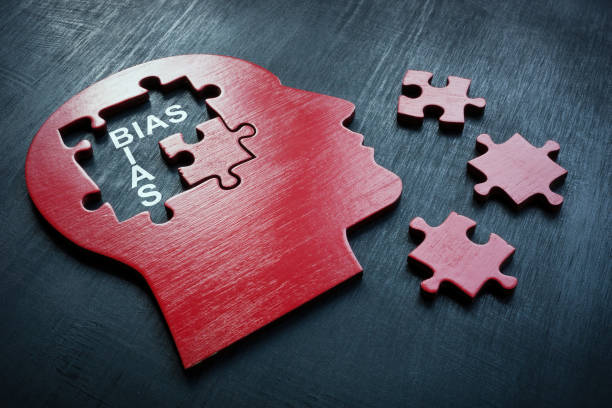Customer acquisition might make headlines, but customer retention drives profitability. Research consistently shows that increasing customer retention by just 5% can boost profits by 25% to 95%, yet many businesses continue to prioritize acquisition over retention.
This comprehensive guide explores the science behind customer retention and provides actionable strategies to transform one-time buyers into loyal advocates. Drawing on behavioral psychology, data science, and proven business practices, we'll help you build a retention system that delivers measurable results.
Understanding the Economics of Customer Retention
Before diving into specific strategies, it's essential to understand why retention deserves your attention:
The Financial Impact of Retention
- Acquisition vs. Retention Costs: Acquiring a new customer costs 5-25 times more than retaining an existing one
- Profit Contribution: Existing customers spend 67% more than new customers
- Revenue Stability: A loyal customer base provides predictable revenue, reducing business volatility
- Referral Value: Satisfied customers become advocates, driving free acquisition through referrals

The compounding financial impact of improved customer retention rates
The Retention Multiplier Effect
Customer retention creates a powerful multiplier effect on your business through:
- Increased Purchase Frequency: Loyal customers buy more often
- Higher Average Order Value: Existing customers typically spend more per transaction
- Extended Customer Lifetime: Longer relationships mean more total revenue
- Lower Servicing Costs: Existing customers require less support and education
- Word-of-Mouth Marketing: Loyal customers actively promote your business
The Retention ROI Calculator
To calculate the impact of improved retention on your business:
- Current annual revenue: $1,000,000
- Current retention rate: 70%
- Improved retention rate: 75% (5% increase)
- Average customer lifespan: Increases from 3.3 years to 4 years
- Customer lifetime value: Increases by 21%
- 5-year revenue impact: $1,276,000 in additional revenue
This example demonstrates how even small improvements in retention can dramatically impact long-term business performance.
The Psychology of Customer Loyalty
Effective retention strategies are built on understanding the psychological factors that drive customer loyalty:
The Four Pillars of Customer Loyalty
1. Emotional Connection
Research by Gallup shows that customers who are emotionally connected to a brand:
- Have a 306% higher lifetime value
- Stay with a brand for an average of 5.1 years (vs. 3.4 years)
- Recommend brands at a rate of 71% (vs. 45%)
Emotional connections form when brands:
- Align with customer values and identity
- Create memorable experiences that evoke positive emotions
- Demonstrate authentic care beyond the transaction
- Build a sense of community and belonging
2. Perceived Value
Customers stay loyal when they perceive they're receiving more value than they're giving up. This value equation includes:
- Functional Value: How well your product/service solves their problem
- Economic Value: The financial benefit relative to cost
- Emotional Value: How the experience makes them feel
- Social Value: Status or identity benefits from association with your brand
3. Reduced Friction
The easier it is to do business with you, the more likely customers will stay. Behavioral science shows that humans naturally follow the path of least resistance:
- Each point of friction increases the likelihood of customer defection
- Convenience often outweighs price in retention decisions
- Habit formation is a powerful retention driver
- Cognitive load reduction increases customer satisfaction
4. Trust and Reciprocity
Trust is the foundation of long-term relationships. It develops through:
- Consistency: Reliable experiences over time
- Transparency: Honest communication, especially when things go wrong
- Competence: Demonstrated expertise and capability
- Benevolence: Showing genuine care for customer outcomes
Pro Tip: The Trust Battery
Shopify CEO Tobi Lütke uses the concept of a "trust battery" to describe how trust builds or depletes over time. Every interaction either charges or drains the battery. Map your customer journey to identify where your trust battery gets charged or drained, then systematically address the draining points.
Building Your Customer Retention Framework
Now that we understand the psychology behind loyalty, let's explore a comprehensive framework for improving retention:
1. Exceptional Onboarding
The first 30-90 days determine the trajectory of your customer relationship. Effective onboarding:
- Accelerates time-to-value for new customers
- Sets clear expectations and reduces uncertainty
- Builds product usage habits
- Establishes communication channels and relationships
Implementation Strategies:
- Welcome Sequences: Multi-touch communication flows that guide new customers
- Success Milestones: Clear steps that lead to initial value realization
- Educational Content: Resources that build product knowledge and confidence
- Personal Touchpoints: Human connections that demonstrate care and support

The four phases of effective customer onboarding
2. Proactive Customer Success
Don't wait for problems to arise—actively help customers achieve their goals:
- Identify and track customer health indicators
- Intervene before issues become problems
- Provide ongoing education and enablement
- Celebrate customer wins and milestones
Implementation Strategies:
- Customer Health Scoring: Create a composite metric of engagement, usage, and satisfaction
- Success Plans: Documented roadmaps for achieving customer objectives
- Business Reviews: Regular meetings to assess progress and plan improvements
- Usage Analytics: Data-driven insights to identify at-risk accounts
Customer Health Score Components
A comprehensive health score might include:
- Product Usage (40%): Frequency, depth, and breadth of feature adoption
- Support Interactions (20%): Frequency, severity, and resolution time of issues
- Financial Indicators (15%): Payment history, contract changes, expansion opportunities
- Engagement (15%): Responsiveness, participation in webinars/events, content consumption
- NPS/Satisfaction (10%): Explicit feedback through surveys and reviews
Accounts scoring below 70 trigger proactive intervention protocols to address potential churn risks.
3. Value-Driven Communication
Regular, meaningful communication keeps your brand top-of-mind and reinforces value:
- Share relevant content that helps customers succeed
- Provide personalized insights and recommendations
- Communicate product updates and improvements
- Recognize and celebrate customer achievements
Implementation Strategies:
- Segmented Email Campaigns: Tailored content based on customer profiles and behaviors
- Value Realization Reports: Personalized summaries of benefits received
- Educational Webinars: Live and recorded training on relevant topics
- Customer Communities: Forums for peer learning and networking
4. Loyalty and Rewards Programs
Well-designed loyalty programs create both rational and emotional incentives to stay:
- Provide escalating benefits that increase with customer tenure
- Offer exclusive experiences not available to new customers
- Create status levels that recognize and reward loyalty
- Build community among your best customers
Implementation Strategies:
- Tiered Membership Programs: Increasing benefits at different loyalty levels
- Surprise and Delight: Unexpected rewards that create emotional connection
- Exclusive Access: Early or special access to new products and features
- Recognition Programs: Public acknowledgment of customer achievements
Pro Tip: The Endowed Progress Effect
Research shows that people are more likely to complete loyalty programs when they feel they've already made progress. Instead of starting customers at zero, give them immediate progress toward their first reward (e.g., "You've already earned 500 points just for joining!"). This psychological hack can increase program completion rates by up to 82%.
5. Feedback Loops and Continuous Improvement
Systematically gathering and acting on customer feedback demonstrates that you value their input:
- Collect feedback through multiple channels
- Close the loop by acknowledging and addressing feedback
- Share how customer input shapes your product and service
- Involve customers in your development process
Implementation Strategies:
- Voice of Customer Program: Structured approach to collecting and analyzing feedback
- Customer Advisory Boards: Formal groups that provide ongoing input
- Feedback → Action Workflows: Processes that ensure feedback drives change
- Beta Programs: Early access to new features in exchange for feedback
6. Recovery Excellence
How you handle service failures often has more impact on loyalty than when everything goes right:
- Respond quickly to problems
- Take ownership without deflecting blame
- Provide fair resolution
- Follow up to ensure satisfaction
Implementation Strategies:
- Service Recovery Protocols: Clear processes for addressing different types of failures
- Empowered Frontline Staff: Authority to resolve issues without escalation
- Root Cause Analysis: Systematic approach to preventing recurring problems
- Recovery Communication: Templates and training for effective problem resolution
The HEARD Framework for Service Recovery
The Ritz-Carlton uses this simple but effective approach to service recovery:
- Hear: Listen actively to understand the customer's concern
- Empathize: Express genuine understanding and concern
- Apologize: Offer a sincere apology for the experience
- Resolve: Fix the issue completely and promptly
- Diagnose: Identify root causes to prevent recurrence
This framework transforms service failures into opportunities to build deeper loyalty.
Measuring Retention Success
Effective retention strategies require robust measurement. Focus on these key metrics:
Core Retention Metrics
- Customer Retention Rate: Percentage of customers retained over a specific period
- Customer Churn Rate: Percentage of customers lost over a specific period
- Revenue Retention Rate: Percentage of revenue retained from existing customers
- Net Revenue Retention: Total revenue from existing customers including expansion
- Customer Lifetime Value (CLV): Total value a customer generates over their relationship
Leading Indicator Metrics
These metrics help predict future retention before it happens:
- Net Promoter Score (NPS): Likelihood to recommend your product/service
- Customer Satisfaction Score (CSAT): Satisfaction with specific interactions
- Customer Effort Score (CES): Ease of resolving issues or completing tasks
- Product Adoption Rate: Usage of key features and capabilities
- Engagement Score: Composite measure of customer interaction

Example retention metrics dashboard with leading and lagging indicators
Retention Strategies by Business Type
While the principles of retention are universal, implementation varies by business model:
SaaS and Subscription Businesses
Focus areas:
- Time to Value: Accelerate initial success experiences
- Feature Adoption: Drive usage of sticky, value-driving features
- Usage Monitoring: Identify and address usage drops quickly
- Expansion Opportunities: Grow accounts through upsells and cross-sells
E-commerce and Retail
Focus areas:
- Post-Purchase Experience: Delivery, unboxing, and initial use
- Replenishment Cycles: Timely reminders for consumable products
- Personalized Recommendations: Relevant suggestions based on purchase history
- Exclusive Member Benefits: Special pricing, early access, and VIP experiences
Professional Services
Focus areas:
- Relationship Management: Strong personal connections with key stakeholders
- Outcome Documentation: Clear demonstration of value delivered
- Knowledge Transfer: Building client capability and self-sufficiency
- Strategic Partnership: Evolving from vendor to trusted advisor
Building a Retention-Focused Culture
Sustainable retention requires more than tactics—it demands organizational alignment:
Leadership Commitment
- Establish retention as a strategic priority
- Allocate appropriate resources to retention initiatives
- Recognize and reward retention-driving behaviors
- Model customer-centric decision making
Cross-Functional Collaboration
- Break down silos between departments that impact the customer experience
- Create shared retention goals across teams
- Establish clear ownership for retention outcomes
- Implement regular cross-functional retention reviews
Employee Enablement
- Train all employees on retention principles and practices
- Provide tools and resources to support retention efforts
- Empower frontline staff to make retention-focused decisions
- Share retention success stories and learnings
Pro Tip: The Customer Room
Create a physical or virtual "customer room" where you display customer feedback, journey maps, personas, and key metrics. Make this space accessible to all employees and use it for regular retention discussions. This visual reminder keeps customer experience top-of-mind across the organization.
Conclusion: The Retention Revolution
In an era of increasing acquisition costs and customer expectations, retention has moved from a nice-to-have to a strategic imperative. The businesses that thrive will be those that systematically build customer relationships designed to last.
By understanding the psychology of loyalty, implementing a comprehensive retention framework, measuring the right metrics, and building a retention-focused culture, you can transform your business from a revolving door of customers to a community of loyal advocates.
Remember that retention is not a project—it's a perpetual process of listening, adapting, and delivering value. Start with the highest-impact opportunities for your specific business, measure results rigorously, and continuously refine your approach based on what you learn.
The most successful businesses don't just acquire customers—they create relationships so valuable that customers never want to leave.







